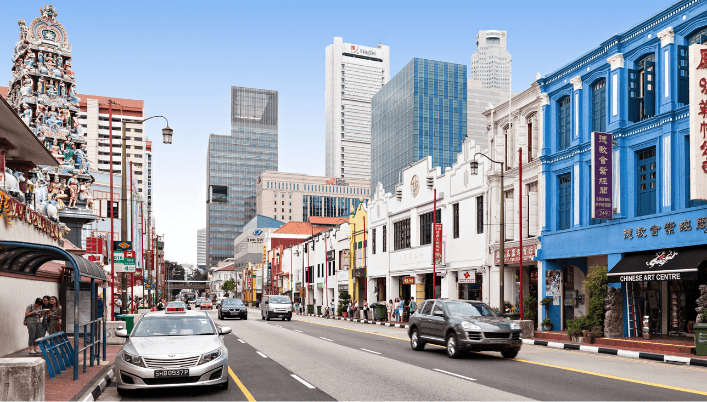
Embark on a captivating journey through Singapore’s East Region, where history meets modernity.
Explore vibrant neighborhoods like Katong and Joo Chiat, and bask in the beauty of East Coast Park’s sandy shores. Marvel at the innovation of Changi Airport, a global gateway that connects this dynamic region to the world.
Discover the perfect balance between urban living and green spaces in Tampines and Bedok. As the sun sets over Marina Bay, embrace the blend of tradition and modernity in Katong and Joo Chiat’s Peranakan charm. Seamlessly connected by MRT and highways, this is a journey where diversity thrives and unity prevails.
Are you ready to explore Singapore’s East Region?
Key Takeaways
- Vibrant Diversity: The East Region of Singapore encompasses towns like Bedok, Pasir Ris, and Tampines, offering a diverse and lively atmosphere.
- Amenities Galore: Known for its international schools, medical facilities, and recreational activities, the region caters to residents and visitors alike.
- Strategic Location: The East Region’s proximity to Changi Airport makes it a well-connected hub for domestic and international travel.
- Historical Significance: Areas like Changi, Tampines, and Bedok have played vital roles in shaping Singapore’s history and development.
- Urban Transformation: Once rural, Tampines and Bedok have evolved into modern residential towns with diverse housing options.
- Scenic East Coast: The East Coast offers picturesque coastlines, recreational facilities, and a relaxed atmosphere at places like Changi Village.
- Continued Development: New districts like Changi Business Park and Serangoon Gardens attract expatriates and multinational companies, boosting economic growth.
- Unique Blend: The East Region combines historical heritage, urban development, and natural beauty, appealing to those seeking diverse experiences.
- Strategic Business Hub: The regional center initiative aims to establish a business hub, creating job opportunities and enhancing community life.
- Enhanced Connectivity: Upcoming projects include the TEL MRT line expansion, promoting seamless connectivity for residents and visitors.
Introduction to the East Region of Singapore
The East Region of Singapore is a vibrant and diverse area that encompasses several towns and districts, including Bedok, Pasir Ris, Tampines, Lorong, Jurong East, and more.
This region is known for its beautiful landscapes, international schools, medical and retail facilities, and a wide variety of recreational activities.
Whether you’re a resident or a visitor, the East Region has something to offer for everyone.
Overview of the East Region and its significance
The East Region is one of the five regions in Singapore and is located in the eastern part of the island.
It is home to a significant portion of the population in Singapore and is known for its well-planned residential areas, commercial hubs, and green spaces.
The region has witnessed rapid development over the years and continues to attract both locals and expatriates due to its excellent amenities and quality of life.
The East Region is also strategically located near Changi Airport, which serves as a major transportation hub for both domestic and international flights.
This makes it convenient for residents to travel and explore other parts of the world.
Historical background and development of the region
The East Region has a rich historical background that dates back to the early days of Singapore’s development.
Areas such as Changi, Paya Lebar, Tampines, Pasir Ris, Bedok, and Marine Parade have played significant roles in shaping Singapore’s history.
Changi, for example, was once a sleepy fishing village but has transformed into a bustling district with Changi Airport as its centerpiece.
The airport has become one of the busiest airports in the world and has contributed greatly to Singapore’s economic growth.
Tampines and Bedok were once rural areas but have since been developed into thriving residential towns with modern amenities and infrastructure.
These towns offer a wide range of housing options, from apartments to landed properties, catering to the diverse needs of residents.
The East Coast, with its scenic coastline and recreational facilities, has become a popular destination for both locals and tourists.
Changi Village, located at the eastern tip of Singapore, is known for its laid-back atmosphere and delicious local food.
In recent years, the East Region has seen further development with the establishment of new districts such as Changi Business Park and Serangoon Gardens.
These areas have attracted multinational companies and expatriates, further enhancing the region’s economic growth and cultural diversity.
In conclusion, the East Region of Singapore offers a unique blend of history, development, and natural beauty.
Whether you’re looking for a place to live, work, or explore, this region has something for everyone.
From its international schools and medical facilities to its retail hubs and recreational spaces, the East Region continues to be a desirable destination in Singapore.
Central Region of the East Region
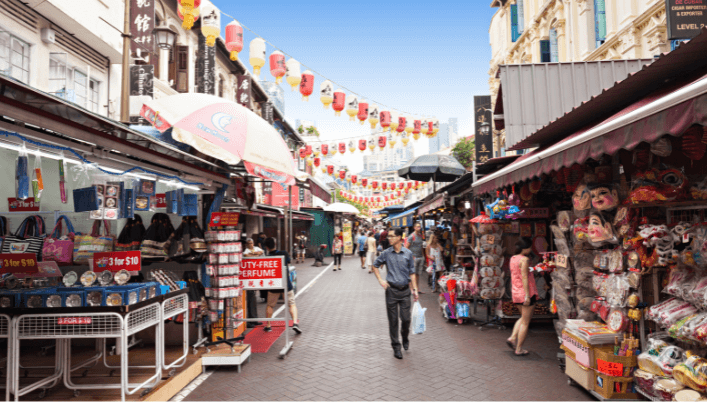
Overview of the central region within the East
The central region within the East is a vibrant and diverse area in Singapore.
It encompasses several neighborhoods, including Lorong Chuan, Choa Chu Kang, Yio Chu Kang, Boon Lay, Ceylon Road, Kebun Baru, Kent Ridge, Pandan Gardens, Teban Gardens, Toh Tuck, and more.
This region is known for its mix of residential areas, commercial hubs, and natural attractions.
Despite being the smallest land area in Singapore’s city-state, the central region within the East is densely populated and offers a wide range of amenities and facilities.
It is well-connected with an extensive MRT network, making it convenient for residents and visitors to travel around.
Key landmarks and attractions in the central region
The central region within the East is home to several key landmarks and attractions that draw both locals and tourists alike.
One of the most popular destinations is the East Coast Park, a 15-kilometer-long stretch of beachfront park that offers various recreational activities such as cycling, picnicking, and water sports.
The park is also known for its food scene, with establishments like the East Coast Seafood Centre and East Coast Lagoon Food Centre serving up delicious local dishes.
Another notable area in the central region is Katong and Joo Chiat.
These neighborhoods are rich in heritage and culture, with beautifully preserved Peranakan shophouses lining the streets.
Visitors can explore Joo Chiat Road, known for its vibrant atmosphere and diverse culinary offerings.
Marina Bay is another iconic landmark in the central region.
It is home to world-class attractions such as Gardens by the Bay and Marina Bay Sands.
Visitors can enjoy stunning views of the city skyline, indulge in shopping at luxury boutiques, or dine at award-winning restaurants.
For nature lovers, Pulau Ubin is a must-visit.
This small island off the northeastern coast of Singapore offers a glimpse into the country’s past with its rustic charm and untouched landscapes.
Visitors can rent bicycles and explore the island’s trails, visit traditional kampong houses, or enjoy the tranquility of its mangrove forests.
The central region within the East is also conveniently located near Changi Airport, making it an ideal place for travelers to stay.
It is also home to shopping malls like Parkway Parade, where visitors can shop for fashion, electronics, and more.
In conclusion, the central region within the East is a dynamic and exciting part of Singapore.
With its mix of residential areas, commercial hubs, and natural attractions, it offers something for everyone.
Whether you’re looking to relax on the beach, explore cultural heritage, or indulge in shopping and dining experiences, this region has it all.
North-East Region of the East
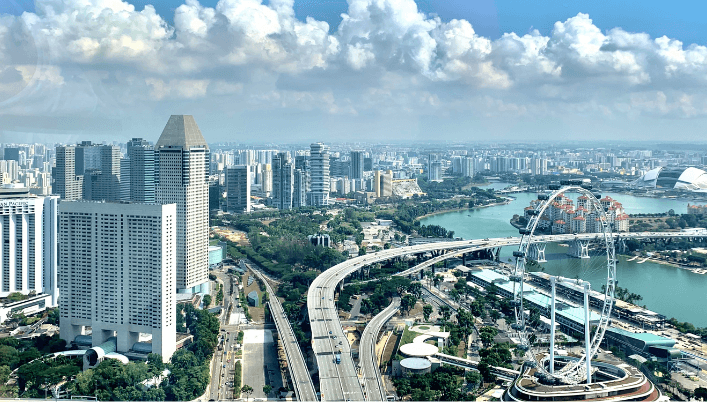
Overview of the north-east region within the East
The North-East Region is a vibrant and bustling area located within the eastern part of Singapore.
It is known for its diverse mix of residential, commercial, and recreational areas.
The region is bordered by the Central Region to the west and the North-East Region to the east.
Some of the key neighborhoods in the North-East Region include Hougang, Punggol, and Serangoon.
These areas offer a wide range of amenities and facilities, making them attractive to both residents and visitors alike.
The North-East Region is also home to several educational facilities, including schools and colleges.
This makes it an ideal location for families with children who are looking for quality education options.
Notable neighborhoods and highlights in the north-east region
One of the notable neighborhoods in the North-East Region is Siglap.
This charming residential area offers a mix of landed properties and condominiums, providing residents with a variety of housing options.
The neighborhood is also known for its close proximity to Pasir Ris Park and Bedok Reservoir, offering residents plenty of opportunities for outdoor activities.
Another popular neighborhood in the North-East Region is Tanah Merah.
This area is well-connected with Tanah Merah MRT station, providing easy access to other parts of Singapore.
It is also home to several schools, making it an attractive choice for families with school-going children.
Hougang is another vibrant neighborhood in the North-East Region.
It is known for its lively atmosphere and diverse range of amenities.
The Hougang Bus Interchange serves as a transportation hub, making it convenient for residents to travel around Singapore.
Punggol is a rapidly developing town in the North-East Region.
It offers a mix of public and private housing options, catering to different needs and budgets.
The town is also known for its beautiful waterfront promenade, which provides residents with stunning views and recreational activities.
Serangoon is a well-established neighborhood in the North-East Region.
It is home to several schools, shopping malls, and eateries, making it a popular choice among residents.
The area is also well-connected with Serangoon MRT station, providing easy access to other parts of Singapore.
In terms of dining options, the North-East Region offers a range of choices.
From mid-range eateries to upscale restaurants, there is something to suit every palate.
Additionally, the region is known for its hawker centers and food courts, where visitors can enjoy affordable and delicious local cuisine.
Overall, the North-East Region of the East offers a diverse mix of residential areas, educational facilities, and recreational amenities.
With its convenient location and vibrant atmosphere, it is no wonder that this region continues to attract residents and visitors alike.
Future Developments in the East Region
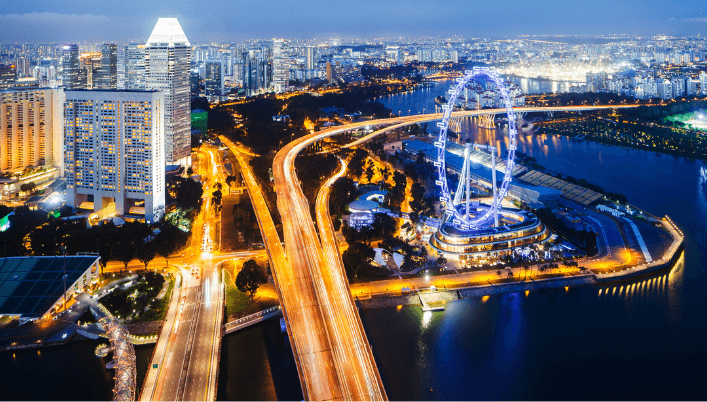
Upcoming projects and plans for the East Region
The East Region of Singapore is set to undergo exciting developments and transformations in the coming years.
With a focus on enhancing the quality of life for residents and creating vibrant communities, several upcoming projects and plans are in the pipeline.
One of the key areas of redevelopment in the East Region is District 15, which includes popular neighborhoods like Marine Parade and Katong.
The Urban Redevelopment Authority (URA) has outlined plans to enhance the area’s connectivity, improve public spaces, and promote sustainable development.
These initiatives aim to create a more livable and inclusive environment for residents.
Another significant development in the East Region is the expansion of the Changi Airport.
As one of the world’s busiest airports, Changi Airport is constantly evolving to meet growing demands.
The upcoming Terminal 5 project will further enhance Changi’s capacity, making it a major aviation hub in the region.
This expansion will not only boost Singapore’s economy but also create job opportunities for residents in the East Region.
Anticipated changes and improvements by 2023
By 2023, several changes and improvements are expected to be completed in the East Region.
One major development is the establishment of a regional center along the East Coast.
This center will serve as a hub for business activities, providing job opportunities closer to home for residents in the region.
In addition to the regional center, there are plans to enhance recreational facilities along the East Coast Park.
This popular waterfront destination will see improvements such as upgraded cycling paths, new amenities, and enhanced green spaces.
These enhancements aim to create a more enjoyable and sustainable environment for residents and visitors alike.
Furthermore, efforts are being made to improve transportation infrastructure in the East Region.
The Thomson-East Coast Line (TEL), which is currently under construction, will provide seamless connectivity from the East Region to other parts of Singapore.
This new MRT line will not only improve commuting convenience but also enhance accessibility to various amenities and employment centers.
Overall, the future of the East Region looks promising with exciting developments and improvements on the horizon.
These projects and plans aim to create a more vibrant, sustainable, and connected community for residents.
With the anticipated changes and improvements by 2023, the East Region is set to become an even more desirable place to live, work, and play.
Connectivity and Transportation in the East Region
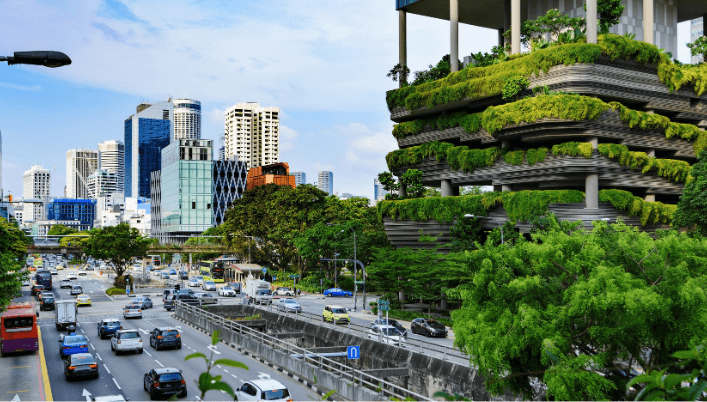
The East Region of Singapore is known for its excellent connectivity and transportation options, making it a highly desirable area to live, work, and play.
With a well-developed rail network, major highways, and various modes of transportation, getting around the East Region is convenient and efficient.
Transportation options and connectivity within the East Region
The East Region boasts a comprehensive transportation system that ensures seamless connectivity within the area and to other parts of Singapore.
The region is served by an extensive rail network, including MRT stations such as Punggol MRT, Serangoon MRT, and Hougang MRT.
These stations provide easy access to different parts of the East Region and beyond.
In addition to the rail network, the East Region is well-connected by major highways like the East Coast Parkway (ECP) and Upper Serangoon Road.
These highways provide direct links to other parts of Singapore, including the city center and Changi Airport.
With these well-planned road networks, residents and visitors can enjoy smooth and efficient travel within the East Region.
Major highways, MRT stations, and bus services
The East Region is served by several major highways that enhance connectivity and accessibility.
The East Coast Parkway (ECP) is a key expressway that connects the region to the city center and Changi Airport.
This highway offers a direct route for commuters traveling between the East Region and other parts of Singapore.
In terms of public transportation, the East Region is well-served by MRT stations, bus interchanges, and bus services.
The Punggol MRT Station serves as a major transportation hub in the region, providing convenient access to various residential areas, shopping malls like Punggol Waterway Point, and recreational spots such as Punggol Park and Punggol Promenade.
Similarly, the Serangoon MRT Station and Hougang MRT Station are important transportation nodes that serve the North-East Region and provide connectivity to other parts of Singapore.
These MRT stations are surrounded by amenities like shopping malls, schools, and parks, making them convenient hubs for residents in the East Region.
In addition to the rail network, bus services in the East Region are well-developed and provide extensive coverage.
Residents can rely on bus services to travel within the region or connect to other parts of Singapore.
The simplicity of Bedok Bus Interchange is another transportation hub that offers convenient bus connections to various destinations.
Overall, the East Region of Singapore offers excellent connectivity and transportation options.
With a well-developed rail network, major highways, and efficient bus services, residents and visitors can enjoy seamless travel within the region and beyond.
Whether it’s commuting to work, exploring recreational areas like Pasir Ris Park or Changi Beach, or traveling to other parts of Singapore, the East Region provides convenient and accessible transportation options for everyone.
Conclusion
In conclusion, branding your business is crucial for standing out in a competitive market.
It goes beyond creating a logo and slogan; it involves defining your business’s unique values and assets that set you apart from competitors.
By investing in consistent branding efforts, you can become more recognizable and memorable to customers, fostering trust and influencing their buying decisions.
The East Region of Singapore offers a diverse range of attractions and highlights for residents and visitors alike.
This region is home to Singapore’s regional center, Paya Lebar, which is a bustling hub of commercial and industrial activity.
The area is also known for its greenery, with beautiful parks and gardens such as East Coast Park and Tampines Eco Green.
The East Region is also home to various residential estates, including Tanjong Rhu, Opera Estate, and Dunman.
These neighborhoods offer a mix of HDB flats and private properties, providing housing options for people from all walks of life.
Families will appreciate the abundance of preschools and educational institutions located around the region.
For those who enjoy shopping and entertainment, the East Region has plenty to offer.
Popular malls like Tampines Mall and i12 Katong provide a wide range of retail options, dining establishments, and entertainment facilities.
The region is also well-connected by the East-West MRT line, making it convenient for residents to travel to other parts of Singapore.
In addition to its residential and commercial areas, the East Region is known for its industrial estates.
Wafer fabrication plants and other manufacturing facilities can be found in areas like Changi Business Park and Loyang Industrial Estate.
The presence of these industries contributes to the region’s economic growth and job opportunities.
Furthermore, the East Region is home to Singapore’s Changi Airport and Paya Lebar Airbase.
These transportation hubs play a vital role in connecting Singapore to the rest of the world and supporting the country’s aviation industry.
Overall, the East Region of Singapore offers a vibrant mix of residential, commercial, and industrial areas.
Its green spaces, educational institutions, shopping malls, and transportation links make it an attractive place to live and work.
As Singapore continues to develop and grow, the East Region is set to play a significant role in shaping the country’s future.
So whether you’re a resident or a visitor, be sure to explore all that the East Region has to offer.
Frequently Asked Questions
What is the east region of Singapore?
The east region of Singapore refers to the eastern part of the country.
It is one of the planning areas in Singapore and is also home to several residential regions, schools, and recreational areas.
What are some notable areas in the east region?
Some notable areas in the east region include Geylang, East Coast Road, Bukit Panjang, Jalan Kayu, Toa Payoh, Bedok South, Simpang Bedok, Punggol Point, Changi Bay, Serangoon North, Pasir Laba, and Potong Pasir.
Are there any international schools in the east region?
Yes, there are several international schools in the east region.
Some examples include the United World College of South East Asia, NPS International School, Canadian International School, and Overseas Family School.
What are some recreational areas in the east region?
The east region is known for its recreational areas, such as East Coast Park, Coney Island, and various park connectors.
These areas provide opportunities for outdoor activities and leisure.
Is the east region a populous area?
Yes, the east region is a populous area in Singapore.
It comprises several residential regions and is home to a significant number of residents.
Is the east region well-connected to other parts of Singapore?
Yes, the east region is well-connected to other parts of Singapore.
It is within walking distance or a short commute to major transportation hubs such as Changi Airport and Paya Lebar.
Are there any primary and secondary schools in the east region?
Yes, there are several primary and secondary schools located in the east region.
It is a popular choice for families due to the presence of reputable educational institutions.
What is the significance of the east region?
The east region is significant as it is home to Singapore’s Changi Airport, Paya Lebar Air Base, and Changi Naval Base.
It serves as a regional center for various economic activities.
Is the East region part of Southeast Asia?
Yes, the east region of Singapore is part of Southeast Asia.
It is located in the eastern part of the island, facing the South China Sea.
What is the geographical size of the east region?
The east region covers a significant area and comprises several planning areas.
It spans several hectares and includes both residential and commercial zones.












